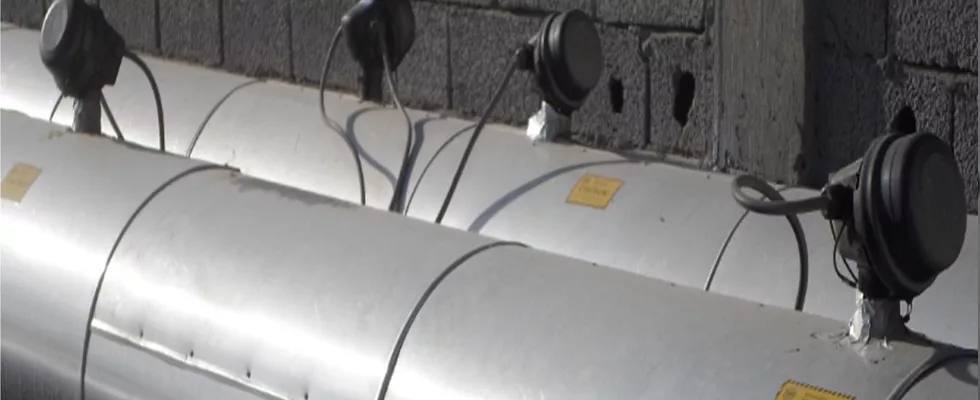Project Description
The EPC Project for Heating System involves the design, procurement, construction, and commissioning of a comprehensive heating system for a building or industrial facility. The project adopts the Engineering, Procurement, and Construction (EPC) model, which covers all aspects of project execution, from conceptualization and system design to procurement of materials and equipment, installation, and final handover. This project aims to provide an efficient, reliable, and cost-effective heating solution tailored to the specific needs of the facility, ensuring comfort, energy efficiency, and compliance with local and international regulations.
Project Scope:
The EPC Heating System Project focuses on the complete implementation of a modern heating system that can include the installation of boilers, heat exchangers, pumps, piping, insulation, and control systems. The system will be designed to meet the specific heating demands of the building or facility while optimizing energy consumption, enhancing operational efficiency, and ensuring safety.
Key Components and Activities:
- System Design and Engineering:
- Heating Load Calculation: The project begins with a detailed analysis of the building or facility’s heating needs. This includes calculating the heating load based on factors such as room size, insulation properties, external climate conditions, and specific user requirements.
- Design and Integration: A customized heating solution is designed, which may include different types of heating systems such as hydronic (water-based) heating, steam systems, or electric heating. The design integrates heating equipment with the existing infrastructure, such as boilers, radiators, underfloor heating, and ducting systems.
- Energy Efficiency: Emphasis is placed on optimizing the system for energy efficiency, such as using condensing boilers, heat recovery systems, or variable speed pumps, to reduce energy consumption and operating costs.
- Control and Automation: An intelligent control system is designed to monitor and regulate the heating system. This may include smart thermostats, sensors, and automated valves that adjust the temperature based on occupancy, weather conditions, or energy usage, ensuring optimal performance.
- Procurement and Material Sourcing:
- Equipment Procurement: The EPC contractor will procure all necessary equipment, including boilers, piping, valves, circulation pumps, radiators, and insulation materials. These components are sourced from reputable manufacturers to meet the project’s performance, reliability, and safety requirements.
- Material Sourcing: High-quality materials such as copper pipes, stainless steel, insulated cables, and control panels are procured to ensure durability and efficiency. Quality control measures are followed to ensure that all materials meet the project specifications.
- Installation and Construction:
- Boiler Installation: The installation of the central heating unit or boiler system is a critical phase. This includes setting up the boiler, connecting it to fuel sources (e.g., gas, electricity, or oil), and integrating it with the central piping system.
- Piping and Distribution System: The piping system is installed to distribute heated water or steam to the radiators or underfloor heating units. The system is designed for optimal flow, minimizing heat loss, and ensuring uniform temperature distribution across the facility.
- Radiator and Heat Exchanger Installation: Depending on the system design, radiators, fan coils, or heat exchangers are installed in key areas to deliver heat effectively to different parts of the building or facility.
- Insulation: Insulation materials are applied to pipes, tanks, and other critical components to reduce heat loss and improve system efficiency. Insulation is also applied to boilers and valves to maintain optimal performance and ensure energy conservation.
- Electrical Wiring and Control Systems: Electrical work includes the installation of wiring, circuit boards, sensors, thermostats, and control panels to regulate the heating system’s performance. This ensures the system operates efficiently and responds automatically to fluctuations in temperature or demand.
- Testing and Commissioning:
- System Testing: After installation, the heating system undergoes a series of tests to ensure that all components are functioning correctly. This includes pressure testing, leak detection, and performance testing of boilers, pumps, and heating circuits.
- System Balancing: The system is balanced to ensure even distribution of heat across all areas of the building. This includes adjusting the flow rates of water or steam, balancing radiators, and ensuring uniform temperature control.
- Safety Checks: Safety systems, such as pressure relief valves, over-temperature protection, and emergency shut-off systems, are tested to ensure compliance with safety standards and codes.
- Control Calibration: The heating control system is calibrated, and sensors are verified to ensure the system responds appropriately to user inputs and environmental conditions.
- Training and Handover:
- Operator Training: The project includes a training program for the facility’s maintenance staff to ensure they are equipped with the knowledge and skills to operate and maintain the heating system effectively. This training covers operation, safety procedures, routine maintenance, and troubleshooting.
- Documentation: All relevant documentation, including system manuals, warranty information, and as-built drawings, is handed over to the client. The documentation includes details about system components, maintenance schedules, and troubleshooting guidelines.
- Final Handover: Upon successful testing and client approval, the heating system is officially handed over for regular use. The EPC contractor provides post-installation support and warranty services as part of the final project phase.
- Environmental and Safety Considerations:
- Energy Efficiency: The heating system is designed to meet modern energy efficiency standards, minimizing fuel consumption and reducing the carbon footprint of the facility. Efficient equipment, such as high-efficiency boilers and smart thermostats, is used to optimize energy use.
- Safety Systems: The project adheres to all safety regulations, ensuring that the heating system operates without risk of fire, gas leaks, or other hazards. This includes the installation of pressure relief valves, temperature monitoring, and emergency shutdown systems to protect personnel and property.

